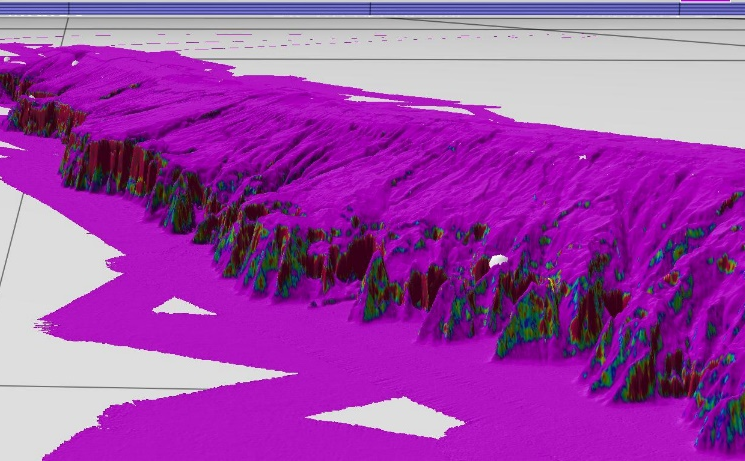[from Deep-Sea Life Issue 14]
Hydrodynamics and Habitat Suitability for Meiofauna And Corals (HydroSMAC)
Sandra Brooke
Florida State University, USA
The eastern Gulf of Mexico is dominated by a massive carbonate platform that slopes gently for over 200km, before dropping sharply to ~3000m. Extensive deep coral habitats occur on the upper slope (300-700m), but the deep escarpment remains virtually unexplored.

On October 1st, our team of scientists set sail to study deep benthic communities of the west Florida escarpment, with funding provided by NOAAs Office of Ocean Exploration and Research.
A primary project objective was to generate coral distribution data (> 1500m) on the escarpment, and improve habitat suitability models for this region. The models are strongly influenced by coral records, so data-limited areas produce inaccurate habitat suitability predictions. These models may be further refined by incorporating coral-relevant variables such as current speed. Another project objective was to assess the utility of meiofauna communities for ‘ground-truthing’ oceanographic currents and improving model predictions.


Despite the usual weather and technical setbacks, we surveyed ~ 5km of seafloor, collected > 80 samples of corals, some of which may be new species, and collected > 180 samples for infaunal community analysis. Every dive revealed dense coral communities with entirely different species assemblages from those on the slope. We could only survey a tiny fraction of the seafloor, but if our observations are representative of the > 600 km of the west Florida escarpment, this may be the largest deep coral province in the Gulf of Mexico.


For more cruise information please go to https://marinelab.fsu.edu/hydrosmac/

